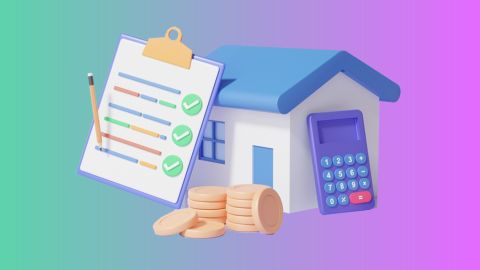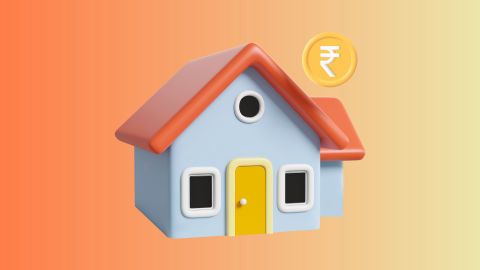Navigating the world of mortgages can be daunting, especially when terms like "subprime mortgage" come into play. As a concept crucial for understanding the varied landscape of home financing, it is important to grasp what a subprime mortgage entails and how it impacts borrowers. Whether you are considering a mortgage or exploring financing options like a Loan Against Property from Bajaj Finance, understanding the nuances of subprime mortgages is essential. In this article, we will delve into everything you need to know about subprime mortgages, from their definitions and characteristics to their benefits and risks. This will equip you with the knowledge to make informed decisions about your financial future.
What is a subprime mortgage?
A subprime mortgage is a type of home loan offered to individuals with lower credit scores, typically below 600. These loans are designed for borrowers who do not qualify for prime mortgages due to their credit histories, which may include late payments, defaults, or bankruptcies. As a result, subprime mortgages carry higher interest rates to compensate lenders for the increased risk.
Understanding subprime mortgage rates
Subprime mortgage rates are higher than those for prime mortgages. This is because lenders assume greater risk when lending to individuals with poor credit histories. The rates can vary significantly based on the borrower’s credit score, loan amount, and term. Understanding these rates is crucial as they directly impact the overall cost of the mortgage. While prime mortgage rates might hover around 3-5%, subprime mortgage rates can range from 6-10% or higher. By comprehending these differences, you can better evaluate whether a subprime mortgage is a viable option for you.
Key characteristics of subprime mortgages
- Higher interest rates: Reflecting the increased risk for lenders.
- Flexible qualification criteria: Cater to borrowers with less-than-perfect credit.
- Prepayment penalties: Charges for paying off the loan early.
- Adjustable rates: Many subprime loans have adjustable interest rates that can increase over time.
- Balloon payments: Some subprime loans may require large payments at the end of the term.
Types of subprime mortgages
| Type | Description |
| Interest-only mortgages | Borrowers pay only interest for a set period, after which they must repay the principal. |
| Adjustable-Rate Mortgages (ARMs) | Interest rates adjust periodically, often starting lower but increasing over time. |
| Dignity mortgages | Higher initial interest rates that can decrease if the borrower makes timely payments. |
| Balloon mortgages | Smaller monthly payments with a large balloon payment at the end of the term. |
How subprime mortgages works?
Subprime mortgages work similarly to traditional mortgages but are tailored for high-risk borrowers. After applying, lenders assess the borrower's creditworthiness and set terms accordingly. Due to the elevated risk, subprime mortgages come with stricter conditions and higher rates. Typically, these loans start with a lower, introductory rate that can increase significantly over time. Borrowers need to be prepared for potential rate hikes and larger payments in the future. Understanding these dynamics helps in evaluating whether such a mortgage aligns with your financial strategy.
Risks associated with subprime mortgages
- Higher costs: Due to higher interest rates.
- Adjustable rates: Can lead to significant payment increases.
- Foreclosure risk: Higher chance due to potential payment difficulties.
- Credit impact: Late payments can further damage credit scores.
Benefits of subprime mortgages
- Access to homeownership: For those unable to qualify for prime loans.
- Credit improvement: Timely payments can improve credit scores.
- Flexible terms: Often more adaptable to individual circumstances.
- Economic opportunity: Can help borrowers capitalise on rising property values.
Who should consider a subprime mortgage?
Subprime mortgages are suitable for individuals with poor credit who are unable to qualify for prime loans. They are also an option for those needing to improve their credit scores over time. However, potential borrowers should carefully weigh the benefits against the risks, considering whether they can handle the higher payments and interest rates associated with these loans.
Subprime mortgage vs. Prime mortgage
| Criteria | Subprime mortgage | Prime mortgage |
| Credit score requirement | Below 600 | Above 700 |
| Interest rates | Higher (6-10% or more) | Lower (3-5%) |
| Loan terms | More flexible but costly | Stricter but more affordable |
| Risk | Higher for both borrower and lender | Lower for both borrower and lender |
| Approval process | Easier for those with poor credit | Requires strong credit history |
How to qualify for a subprime mortgage?
- Improve credit score: Work on increasing your score before applying.
- Save for a larger down payment: Reduces the loan amount and interest rate.
- Stable income: Demonstrate a reliable and sufficient income.
- Consider a co-signer: Enhances creditworthiness.
- Shop around: Compare offers from multiple lenders.
Subprime mortgages offer a pathway to homeownership for those with less-than-perfect credit. However, it is crucial to understand the higher costs and risks involved. By carefully evaluating your financial situation and considering alternatives like a Bajaj Finserv Loan Against Property, you can make a well-informed decision. Always explore your options, such as using a loan against property EMI calculator to estimate payments and assess affordability. This strategic approach will help you navigate the complexities of subprime mortgages and secure your financial future effectively.




